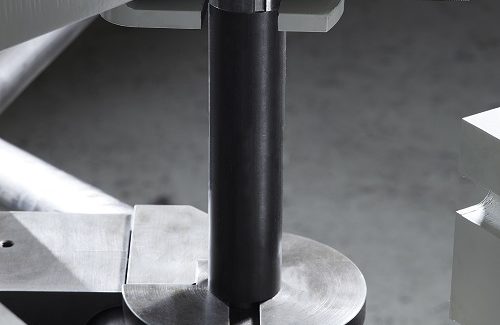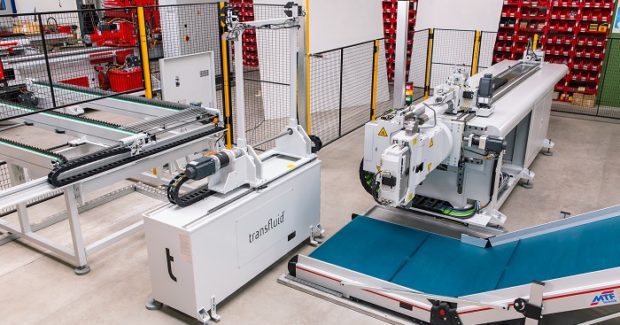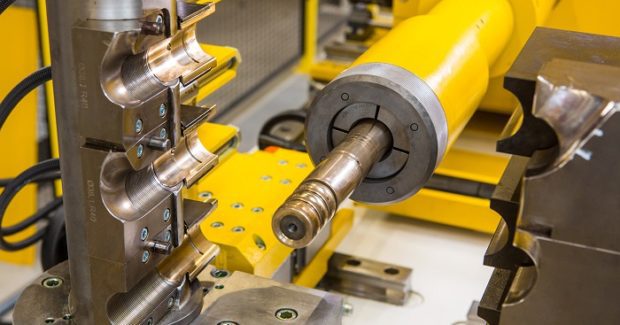Targeted Tube Bending with Controlled Wall Thinning
The t bend mandrel bending machine from transfluid uses sophisticated sequential control to quickly and precisely process small batches of high and ultra-high strength lightweight materials with complex geometries that are subjected to greater loading in aerospace applications.
Posted: April 5, 2019
Critical safety requirements in the aerospace industry place very high demands on tube processing applications. “There is often demand for fast production processes of small batches of complex components,” explained Stefanie Flaeper, the managing director of transfluid® Maschinenbau GmbH (Schmallenberg, Germany). “High and ultra-high strength materials are also an important matter for tubes that are more lightweight and subjected to greater loading. The development of tube processing technologies for aerospace applications requires sophisticated systems to meet new technical milestones.” One example of this sort of sophistication is their specially-designed t bend mandrel bending machine, which can bend titanium, aluminum and stainless steel tubes with a diameter up to 60 mm and wall thickness of 0.5 mm to 1.5 mm, and achieve a radius of 1xD.
Another special feature on this innovative machine is the option to control wall thinning, which is crucial for aircraft applications. Wall thickness must meet specification after bending, which means the flow through the workpiece and its stability must be preserved. For this reason, controlled push bending is applied during the last bend through a controlled inner tube. “All of the electrical axes are equipped with servo-electrical motors and their drives can be neatly synchronized,” noted Flaeper. “Complete synchronization of all the moving axes in different sequences makes sequential control possible.” Sequential control separates each movement of all the axes and moves the different units at the right time, making it possible to gradually and easily introduce a bend and either push or slow down with the required power. All of the sequences on this mandrel bending machine are easy to program, can be allocated to specific jobs and retrieved as and when needed. In addition to the actual bending process, sequencing also takes into account the material, radii and manufacturing processes of the product.
All control aspects can be accessed via a network so that the desired geometries can be taken from CAD software and the data from the impact test can be recorded in the same way. The measuring unit can be connected to the system as well, depending on the size of the lots and batches. The sequence control will also store the relevant data for production as defined by the customer. This can be recalled and processed with a password and correct authorization. The machine’s software and all of its control components and control panel (MMI) are compatible with Industry 4.0 – making it possible to set up the machine with almost no operator intervention. These tube processing improvements are right on target for aerospace work.
In other industries, the demand for greater process flexibility in tube manufacturing keeps growing. This includes minimizing idle time during set-up – from the very start to the first finished component that meets specifications – by reducing or completely eliminating any chances of the operator making a mistake. This means processes must be secured, with no possibility of a tool mix-up. The Japanese principle of poka-yoke teaches how to prevent errors by incorporating multiple elements with technical features, such as immediate detection and prevention of errors. This is particularly important in the case of complex machines and production units that must meet exacting demands. To achieve safer and more effective tube production, it is no longer necessary to make any manual adjustments on electrically-powered t bend bending machines from transfluid.
Bending tools can be mounted securely on the bending machine to reduce set-up time. Additionally, all tool components can be assigned a code in a corresponding system to ensure that the right tools are used for the job, that the tools are positioned correctly and that the parameters for the required geometry are applied. Checking that the right equipment is being used can be done either with a manual scanner or automatically. Special crease smoothers can now locate their exact position again, with accuracy and no manual intervention, thanks to the positioning with brushless drives motors. Set-up times for the first accurate part can be measured in single-digit minutes for standard tubes with 90 mm diameters. For counterclockwise and clockwise bends in the production of tubes with diameters of up to 30 mm, an operator can set up the tools for the left and right production areas in just three minutes for high and reliable flexibility and minimization of the set-up time.
transfluid® Maschinenbau GmbH, Hünegräben 20-22, 57392 Schmallenberg, Germany, +49 2972 97150, www.transfluid.de.


















